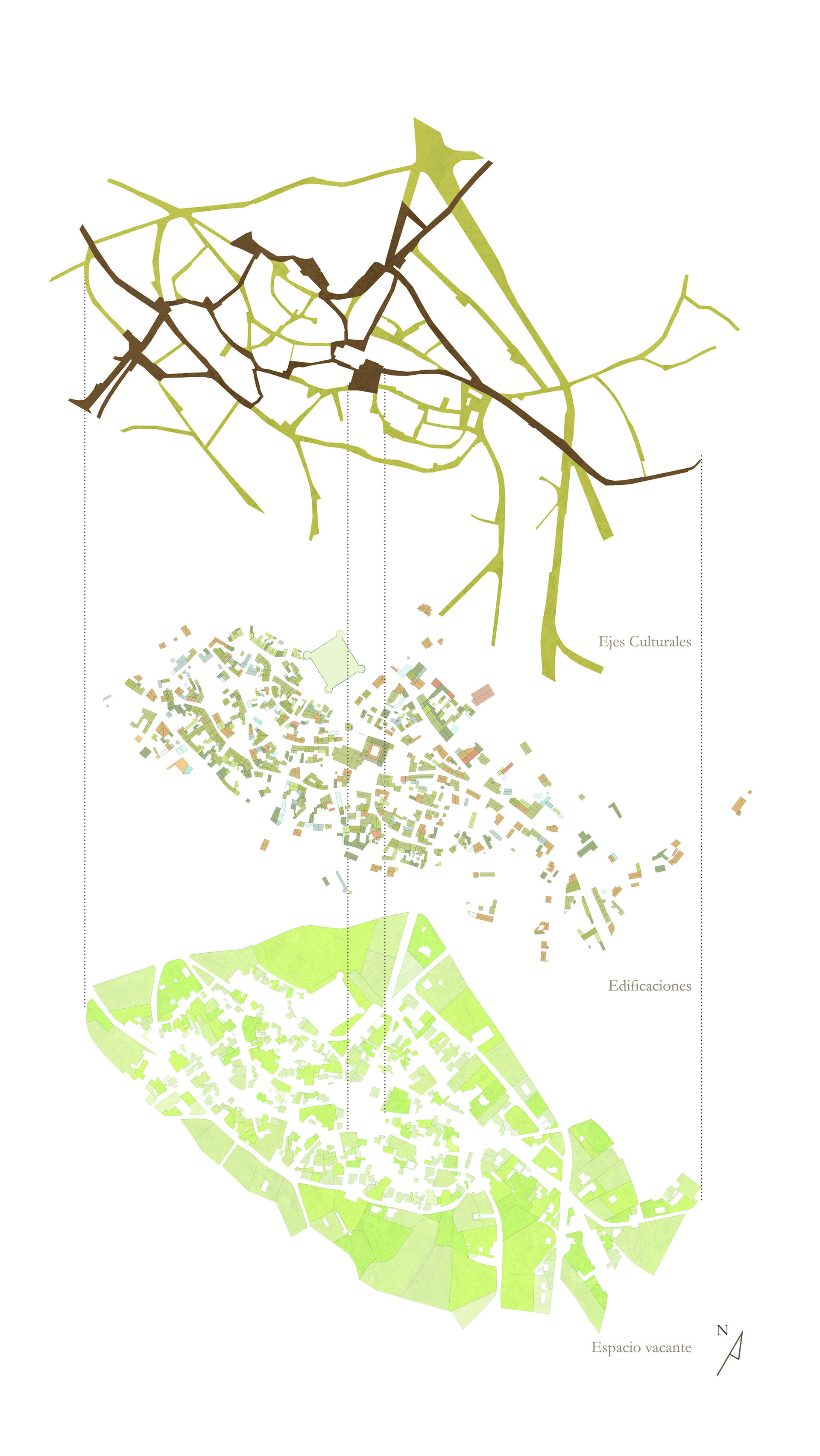DRIEHAUS ARCHITECTURE CONTEST GRAJAL DE CAMPOS, LEÓN
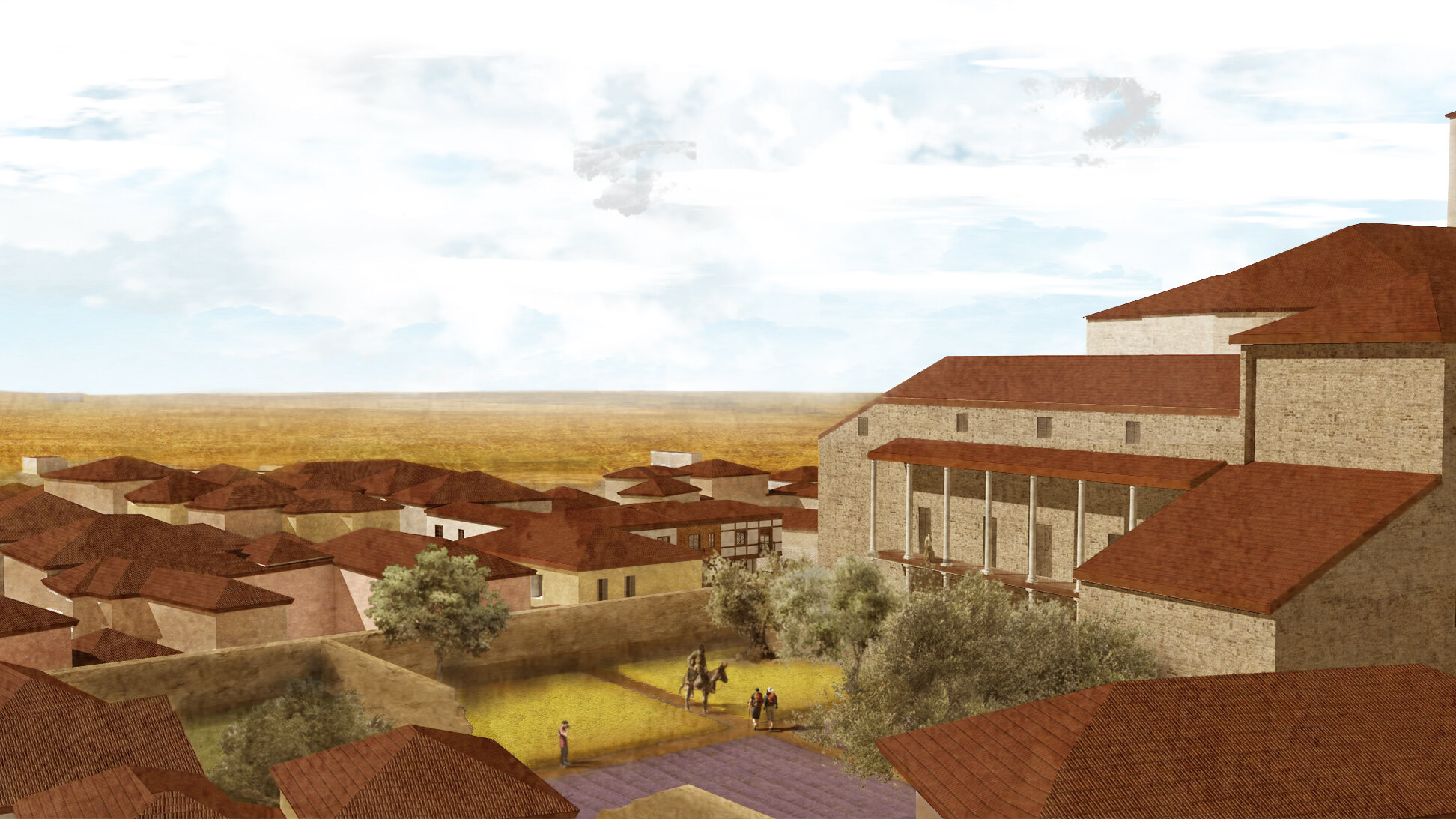



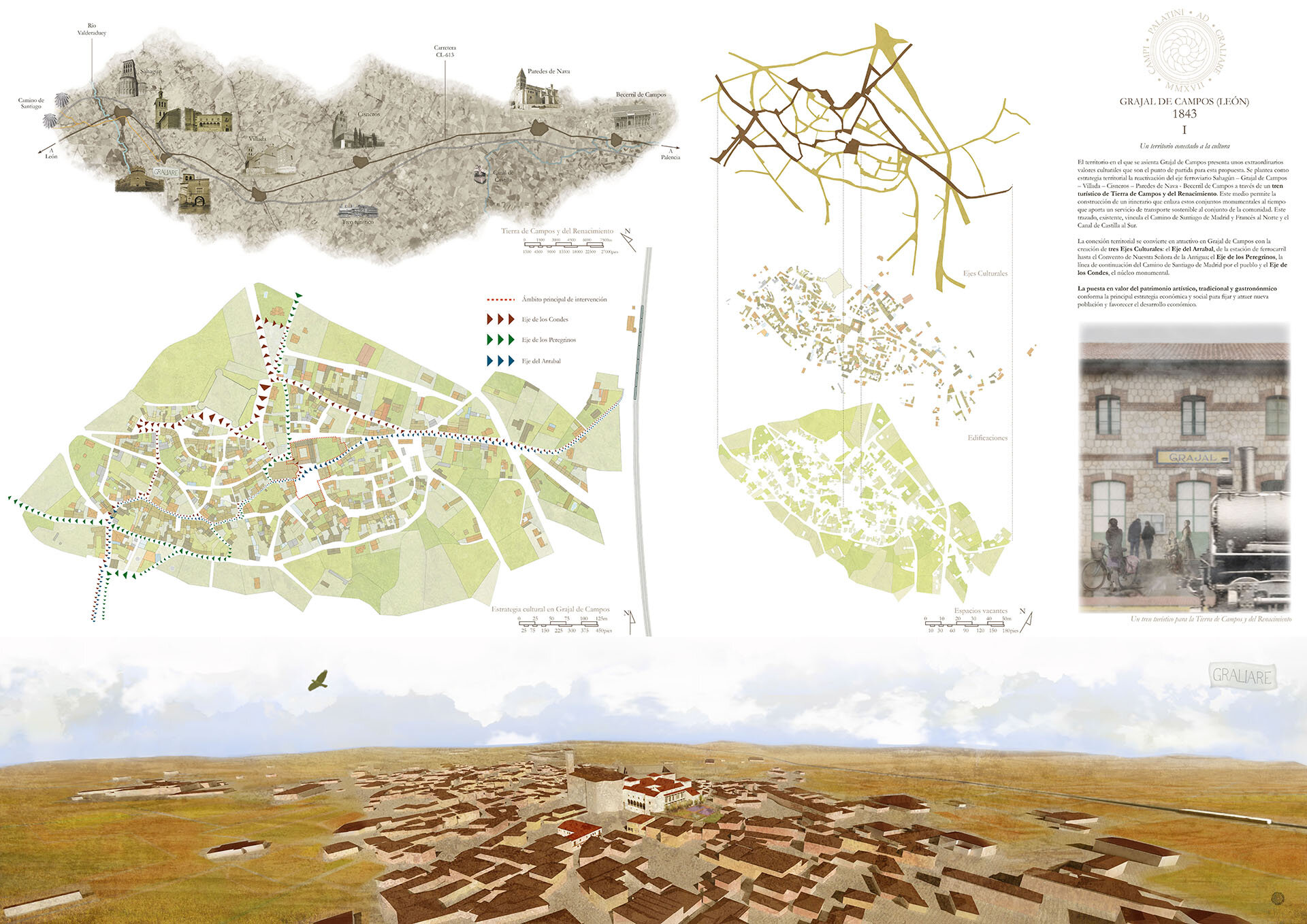
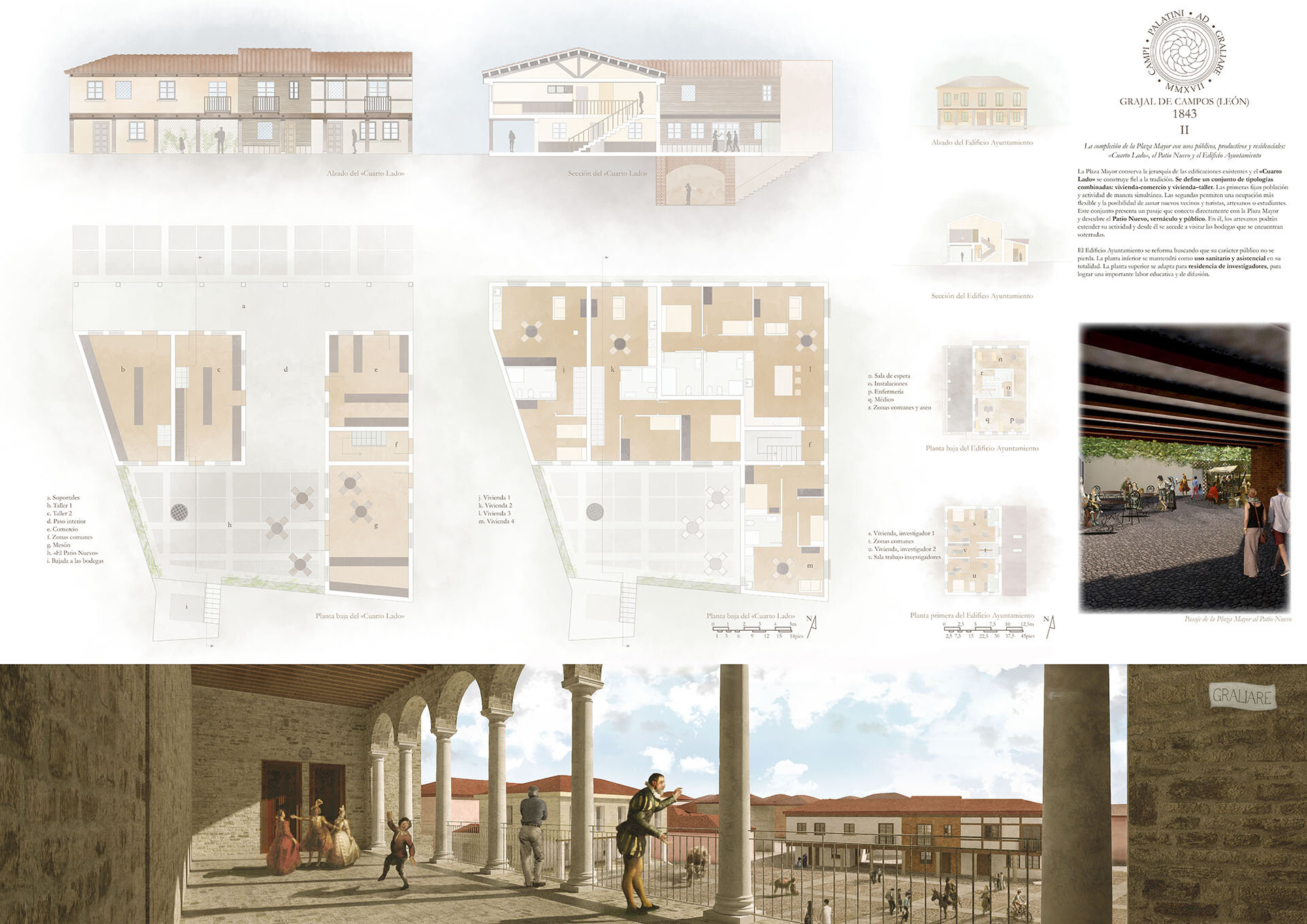
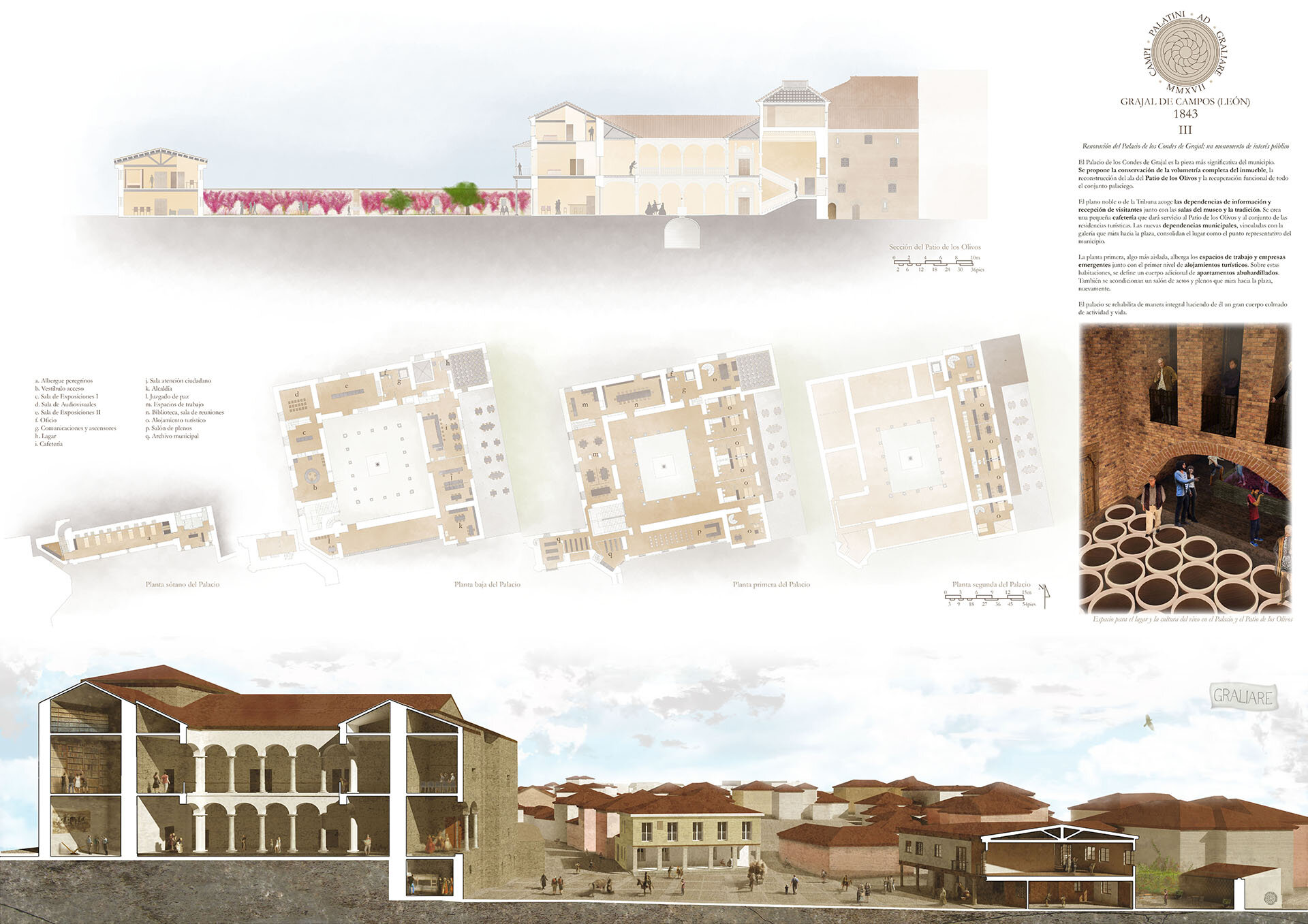

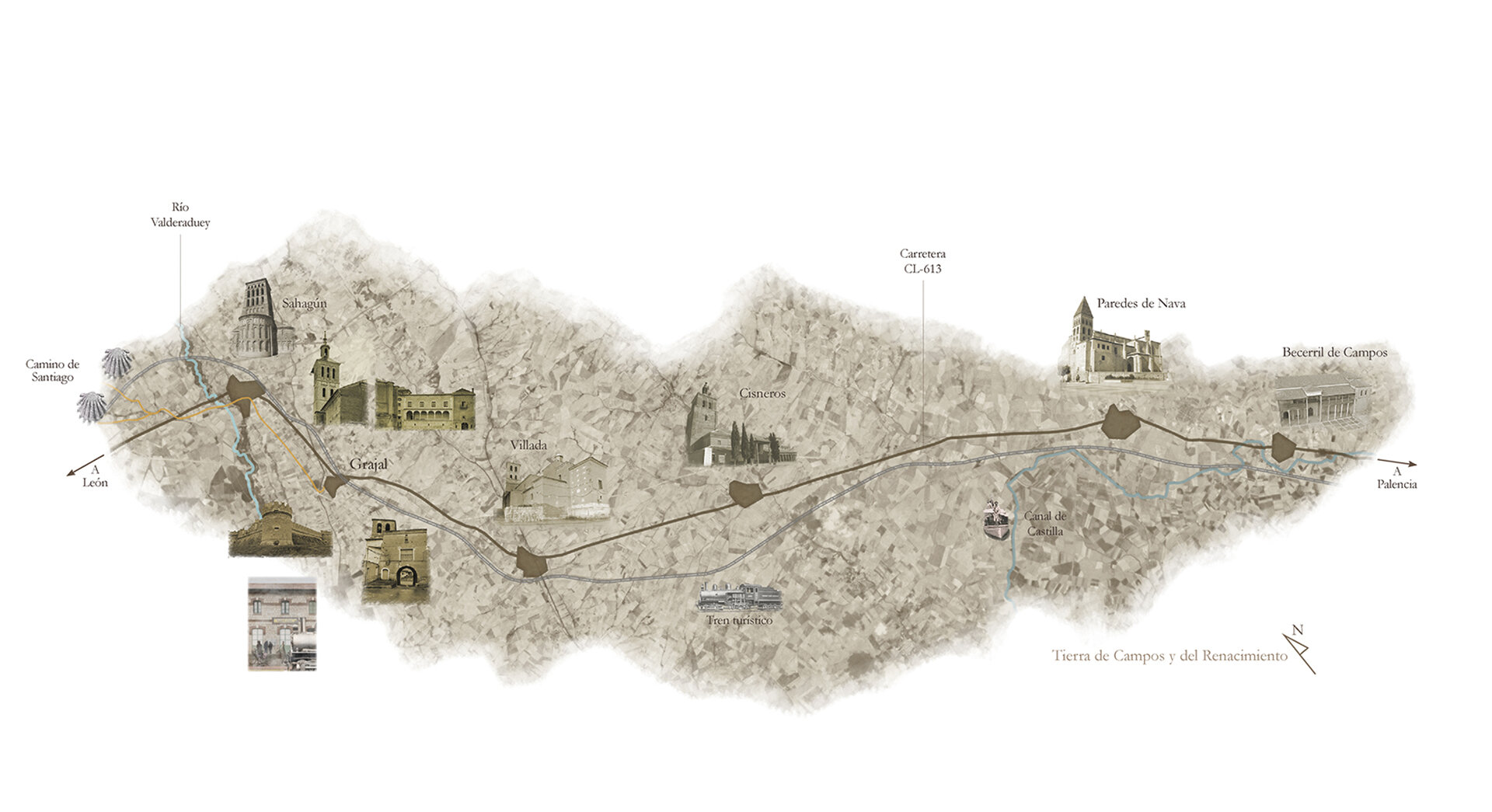
Location: Grajal de Campos, León.
Client: Ayuntamiento de Grajal de Campos.
Date: 2017.
Type: Architecture and urban design.
Program: Territorial strategy and monumental refursbishment.
Surface: 2.537 ha, territorial strategy; 2.700 m2, monumental refurbishment.
Team: Fernando Moral, Alexandra Delgado, Elvira Garrido-Lestache y Elena Merino.
Collaborators Antonio Gálvez, Sara Encijo, Francisco Naranjo, David García.
Phase: Competition.
The proposal CAMPI PALATINI AD GRALIARE focuses on the historical and cultural fortress of the territory of Grajal de Campos for the starting point to build a future where population and activity is recovered, through a triple strategy: a territorial one, a monumental rehabilitation and a revitalization of the municipality.
The territorial strategy defines an alliance between the main municipalities of Tierra de Campos and the Renaissance: Sahagún, Grajal de Campos, Villada, Cisneros, Paredes de Nava and Becerril de Campos. The existing rail route is reactivated through a touristic train that links these towns by a cultural tour and its services. It also intensifies interest in the connections established with the Canal de Castilla and the Camino de Santiago of Madrid and the French one.
The Plaza Mayor is the true reflection of the main intention of the proposal: the patio, the cloister, the square, the voids are transformed into the main poles of attraction. The Palacio de los Condes de Grajal houses the intensification of functions in the proposal without altering its current physiognomy, the Patio de los Olivos regains its marked welcoming character, the City Council Building houses health services and accommodation for the researchers and «Cuarto Lado», the absent side of the Plaza Mayor, combines different typologies of housing and commerce and generates the Patio Nuevo (New Patio) that reveals the wineries inside.
At the municipal level, the proposal articulates three Cultural Axes: the Arrabal, the Counts and the Pilgrims, which mark the strategy of progressive recovery of vacant spaces. Through a Management Consortium and the Arts &Crafts School, these spaces are refurbished and constructed to attract new population, with temporary residences and tourist accommodations of integrated services.
Grajal de Campos becomes a paradigm of cultural revitalization using its genuine potential.
